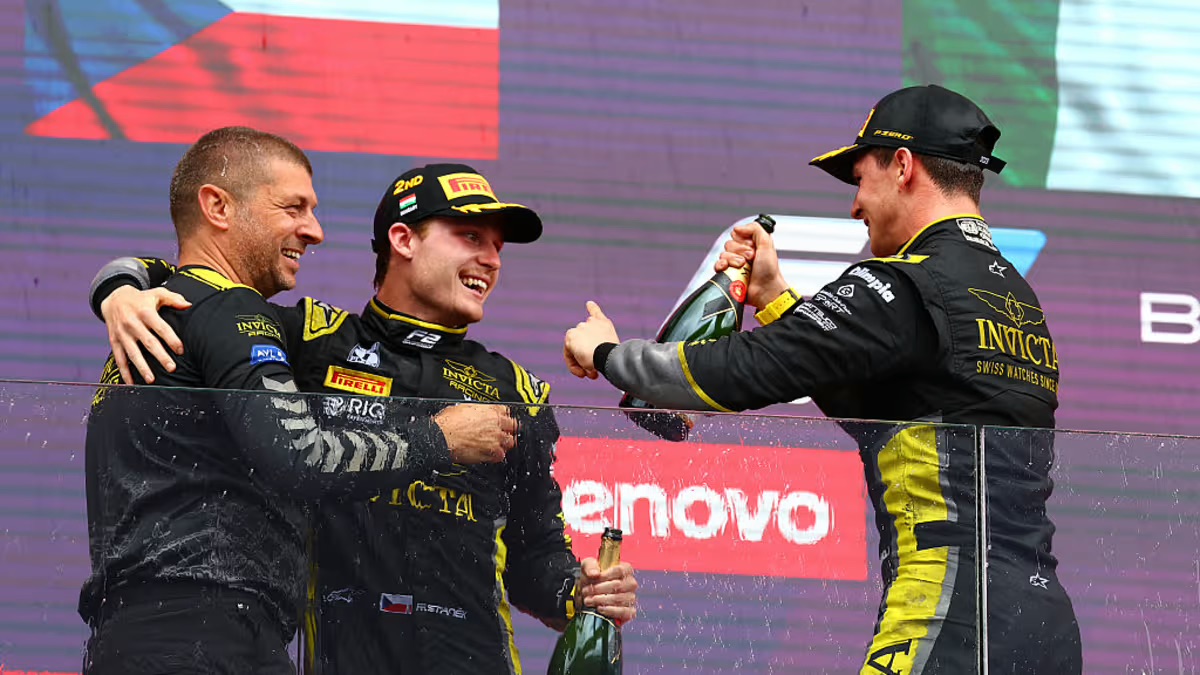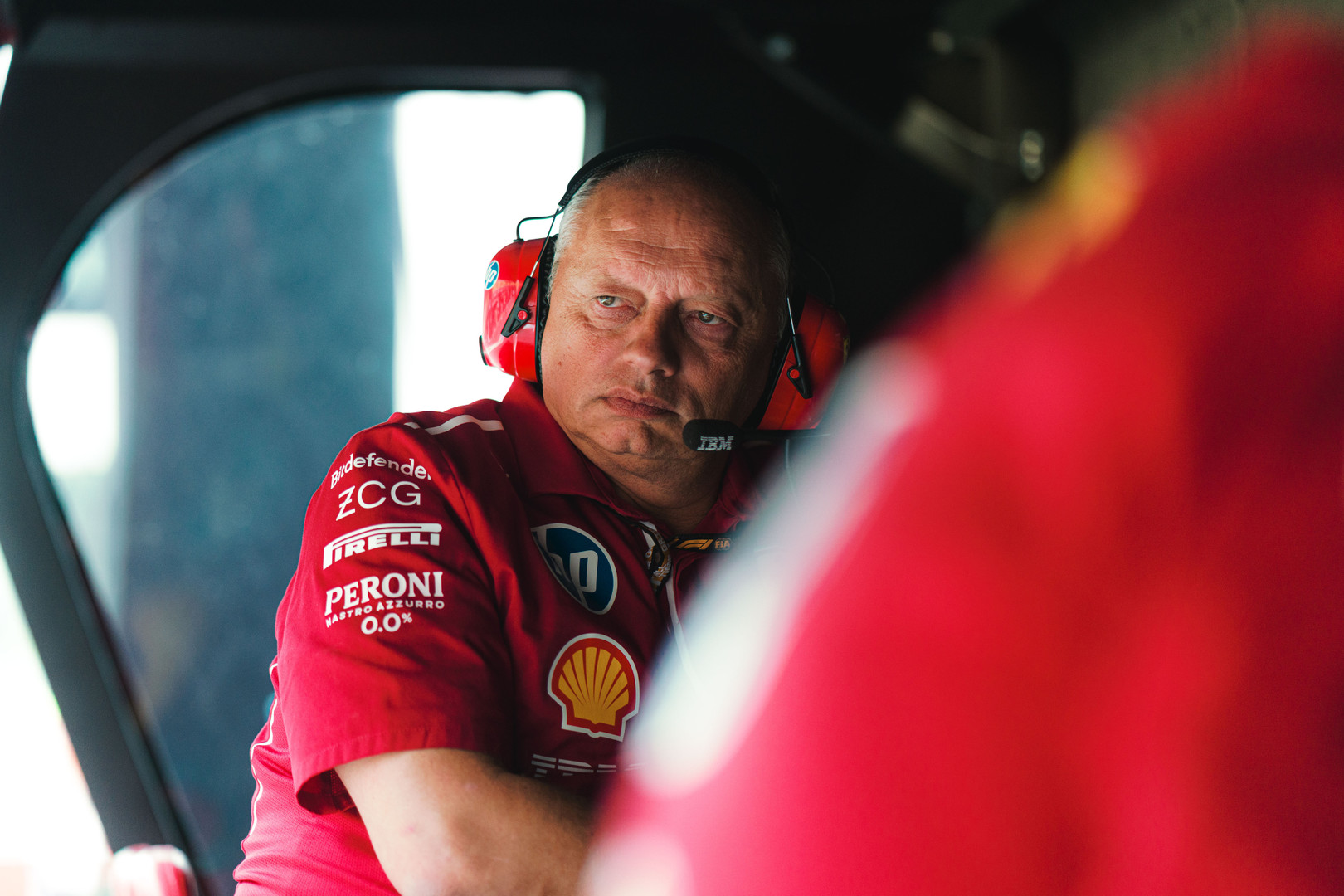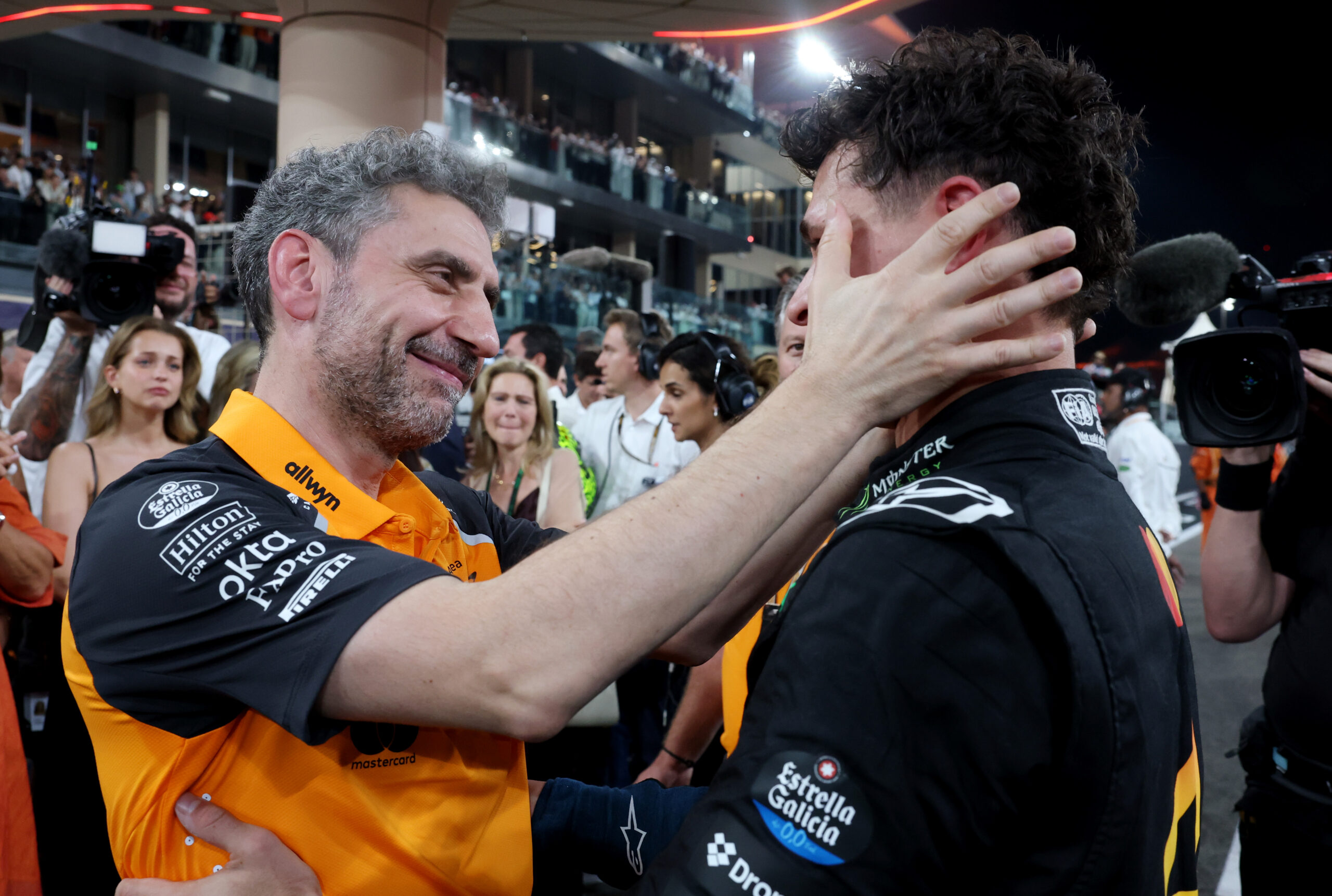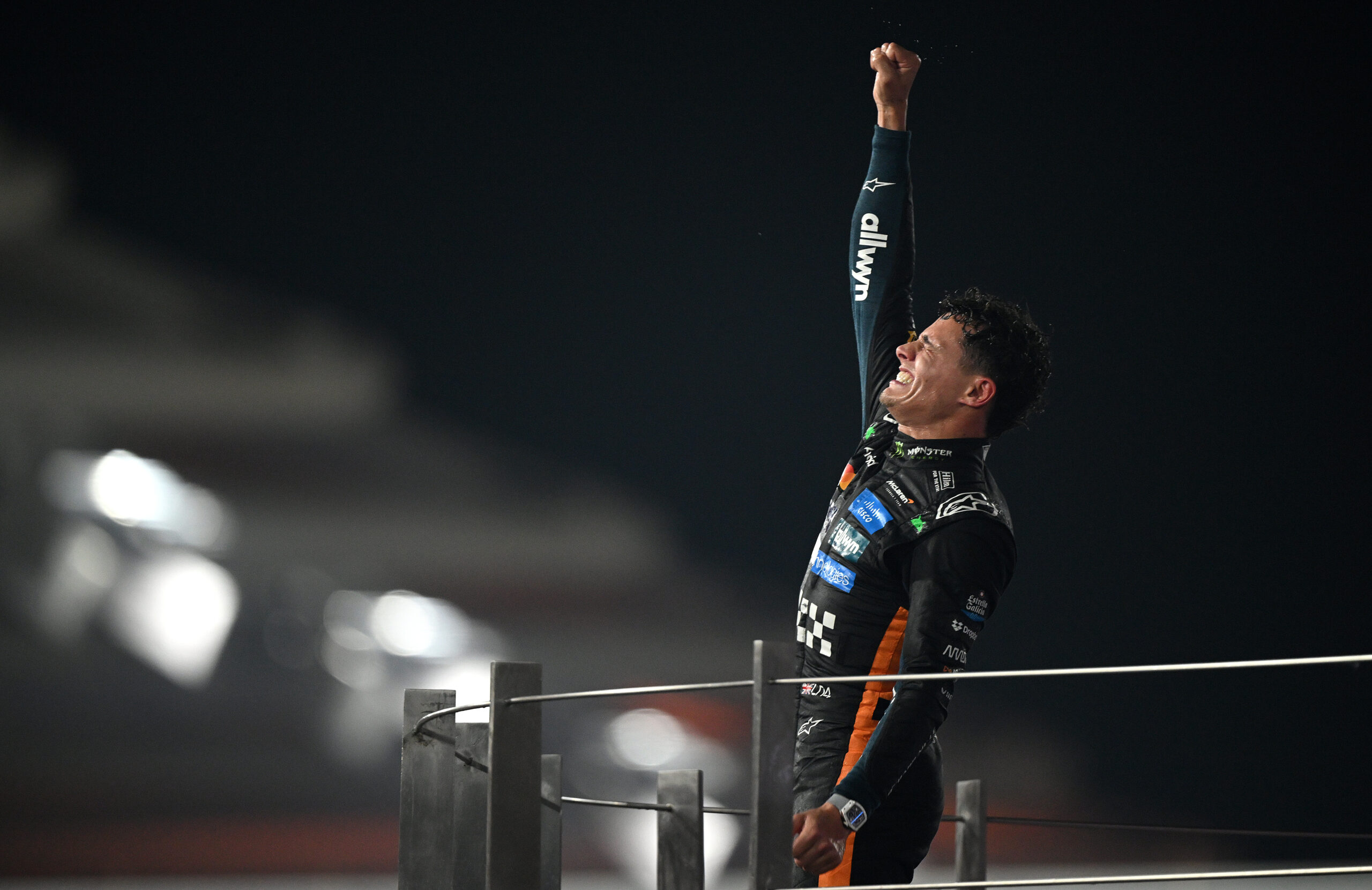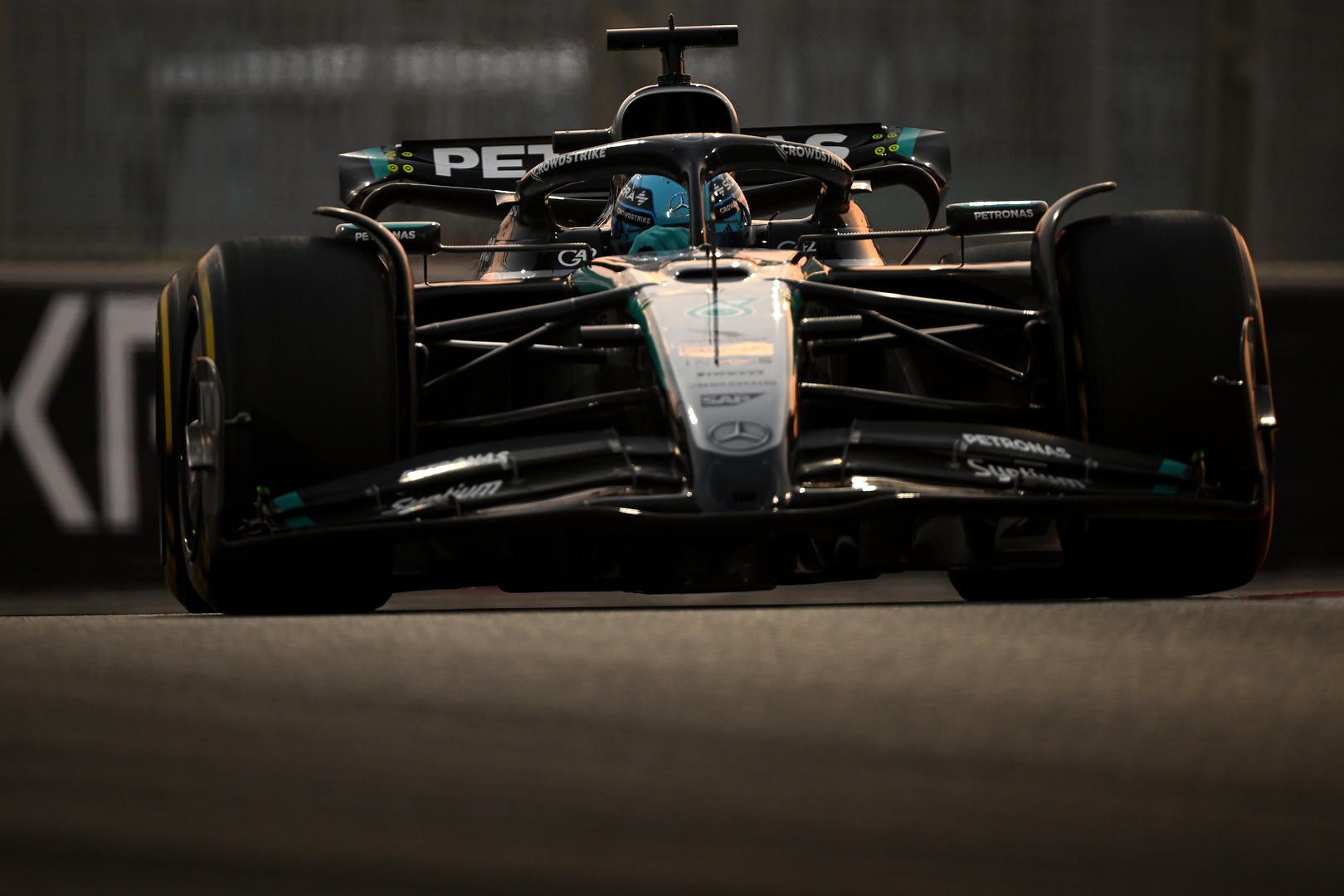Invicta Racing delivered a masterclass performance at the Budapest circuit, securing a one-two finish in both the F2 Qualifying and the Feature Race. Whilst Leonardo Fornaroli ultimately claimed victory on Sunday, it was his Czech teammate Roman Staněk who emerged victorious in Friday’s Qualifying battle, claiming pole position with a lap time of 1:28.779 – just 0.146 seconds ahead of the championship leader.
The Qualifying session provided a fascinating tactical battle that showcased not only the competitive nature of modern motorsport but also the fine margins that separate success from near-misses at the highest level.
A bold departure
Fornaroli’s approach to Qualifying represented a significant departure from conventional wisdom. Rather than following the established pattern of his 21 rivals, who ventured onto the circuit at the session’s opening, the Italian driver remained in the pitlane for the first ten minutes.
This wasn’t merely about timing – it was a calculated decision to exploit the natural rhythm of Qualifying sessions. By waiting until the field had completed their initial flying laps and begun returning to the pits, Fornaroli ensured he would have a clear track for his opening attempt.
The strategy initially showed promise. Despite having his fastest first lap deleted for exceeding track limits at Turn 1, Fornaroli managed to establish himself in fourth position. He then returned to the pits whilst his competitors prepared for their final qualifying runs.
With Staněk holding provisional pole, Fornaroli emerged for his final attempt with just four minutes remaining – a single opportunity to overhaul his teammate. However, despite the clear track advantage, it proved insufficient to secure pole position.
The rationale
Invicta’s tactical approach was built on sound reasoning. The compact nature of the Budapest circuit means traffic management becomes crucial during F2 Qualifying, with yellow and red flags having previously disrupted drivers’ sessions. By running out of sequence, Fornaroli could complete his banker laps without interference.
The strategy also aimed to capitalise on optimal track conditions, which typically improve throughout a session. This approach had previously yielded success for the team in 2023, when Jack Doohan employed a similar out-of-sync strategy to claim pole position, setting his decisive lap whilst rivals had exhausted their tyre allocations.
Where Staněk made the difference
Staněk’s pole position came as no surprise – the Czech driver had demonstrated strong pace throughout practice, finishing fourth in the day’s earlier session. However, his pole-securing lap was far from straightforward.
Staněk’s final lap began poorly, with a moment of oversteer at Turn 1’s exit costing valuable time. He completed the opening sector in 31.991 seconds, compared to Fornaroli’s superior 31.852 seconds. This 0.139-second deficit would have been visible to Staněk as he watched his teammate begin his final attempt.
The crucial second sector recovery
The middle sector proved decisive in Staněk’s favour. Through the circuit’s most technical section, he became the session’s only driver to break the 32-second barrier, recording 31.952 seconds. This represented a significant 0.152-second advantage over Fornaroli through this crucial section.
Analysis of onboard footage suggests Staněk’s superior sector time came from his more aggressive approach to key corners. At Turn 4, he appeared to push the corner exit more aggressively than his teammate, whilst his approach to the Turn 6-7 chicane saw him utilise more kerb, demonstrating considerable confidence in both his abilities and the car’s capabilities.
The final sector
Entering the final sector with just 0.013 seconds separating the teammates, the battle remained finely poised. Staněk ultimately completed the section in 24.836 seconds, compared to Fornaroli’s 24.969 seconds.
Both drivers experienced moments at the final corner, but Staněk’s advantage appeared to stem from his approach to the penultimate corners. His more aggressive exit from Turn 12, pushing to the track’s limits, combined with earlier braking into Turn 13 and a tighter line through the apex, allowed him to apply power earlier than Fornaroli heading into the final corner.
In contrast, Fornaroli’s later braking into Turn 13 compromised his entry, resulting in a wider line through the apex and delayed throttle application – likely costing him the crucial time needed for pole position.
The extent of aggression
The post-F2 Qualifying analysis from Budapest, suggested that Staněk’s willingness to push boundaries proved decisive. Invicta Team Principal James Robinson reflected: “Having a lap deleted for track limits at the end of the first run was not ideal, and maybe he was a little bit conservative on the second run, and then ultimately, the final lap as well, but both have done well in the end, so we take it.”
Comparison of Fornaroli’s deleted first lap with his final attempt revealed a more conservative approach on his decisive run. Whilst his initial aggression at Turns 1, 4, and 12 had resulted in the track limits penalty, his final lap saw him leave greater margins at these critical points.
This conservative adjustment, whilst keeping him on track, may have cost him the pole position. Staněk’s willingness to maintain an aggressive approach throughout proved to be the defining factor in securing Invicta’s front-row lockout.
The decisive margins
The Budapest qualifying session demonstrated that even within the same team, marginal differences in approach and execution can determine success. Whilst Fornaroli’s strategic gamble provided clear track advantage, it was Staněk’s superior execution through the session’s crucial moments that secured pole position.
The 0.146-second margin ultimately reflected not just raw pace, but the Czech driver’s ability to maximise his car’s potential when it mattered most – a quality that defines pole position battles at motorsport’s highest levels.

